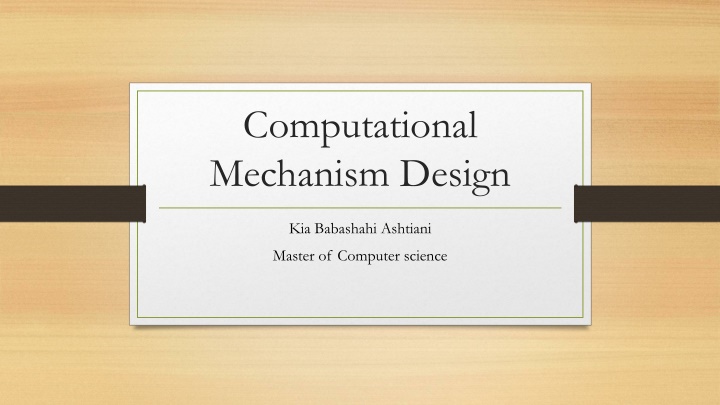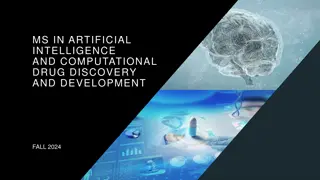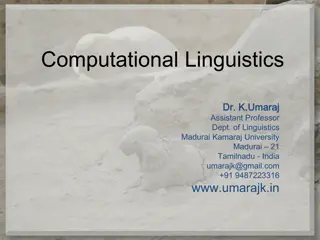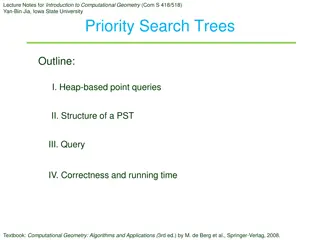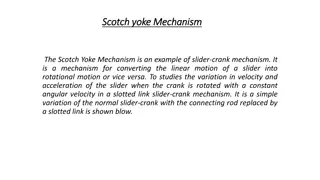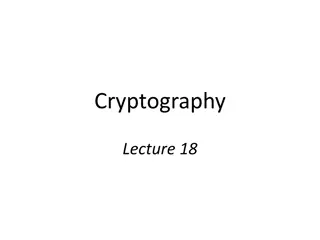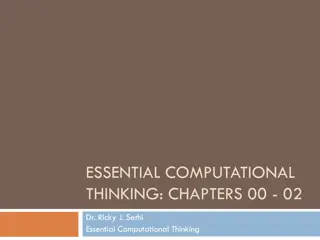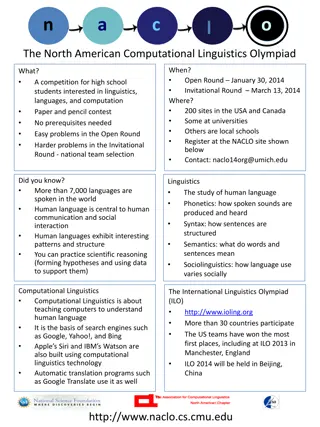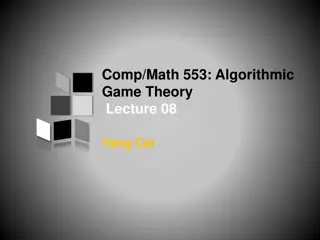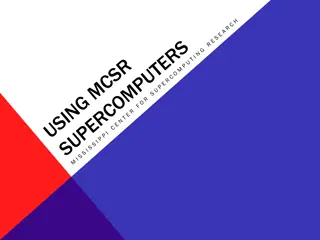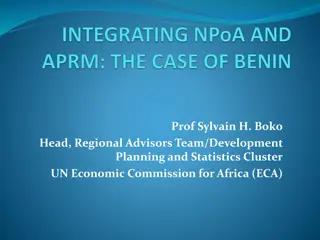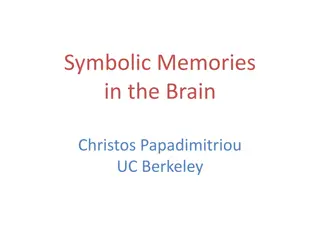Computational Mechanism Design
Computational Mechanism Design focuses on creating incentive-compatible protocols for systems with self-interested agents. The goal is to design mechanisms that encourage truthful behavior and achieve optimal solutions despite individual agents' self-interest. Resource allocation problems, distributed approaches, and references to relevant works in the field are discussed.
Download Presentation

Please find below an Image/Link to download the presentation.
The content on the website is provided AS IS for your information and personal use only. It may not be sold, licensed, or shared on other websites without obtaining consent from the author.If you encounter any issues during the download, it is possible that the publisher has removed the file from their server.
You are allowed to download the files provided on this website for personal or commercial use, subject to the condition that they are used lawfully. All files are the property of their respective owners.
The content on the website is provided AS IS for your information and personal use only. It may not be sold, licensed, or shared on other websites without obtaining consent from the author.
E N D
Presentation Transcript
Computational Mechanism Design Kia Babashahi Ashtiani Master of Computer science
Computational Mechanism Design The internet is full of users and computational devices that are self interested. These agents have private information and goals. The goal is to design incentive-compatible protocols, for our systems in which we can compute optimal system wide solutions despite the self interest of individual agents
Computational Mechanism Design Mechanism design seeks to define the rules of interaction between selfish and rational agents in order to attain an objective not necessarily shared by all agents. Agents are selfish so each agent may try to manipulate the mechanism by providing false information in order to achieve a better outcome. A good mechanism is immune to such manipulations and encourages the selfish agents to behave truthfully or as the mechanism designer expects.
Resource allocation Problem Given a set of resources and a set of agents which have preferences on them, we wish to allocate all resources to agents and Maximize an objective. We are using a distributed approach towards the problem meaning that Agents make local negotiations with each other and there is no omniscient central entity. In social networks there are communication limitations like Facebook: limited amount of friends. Each agent has only partial information about the resource allocation at a time.
Refrences Anthoine Nongaillard,2009. An Agent based Approach for Distributed Resource Allocation David Christopher Parkes,2001, ITERATIVE COMBINATORIAL AUCTIONS: ACHIEVING ECONOMIC AND COMPUTATIONAL EFFICIENCY F., Asselin, B., Jaumard, A., Nongaillard , 2006 A Technique for Large Automated Mechanism Design Problems, IEE
